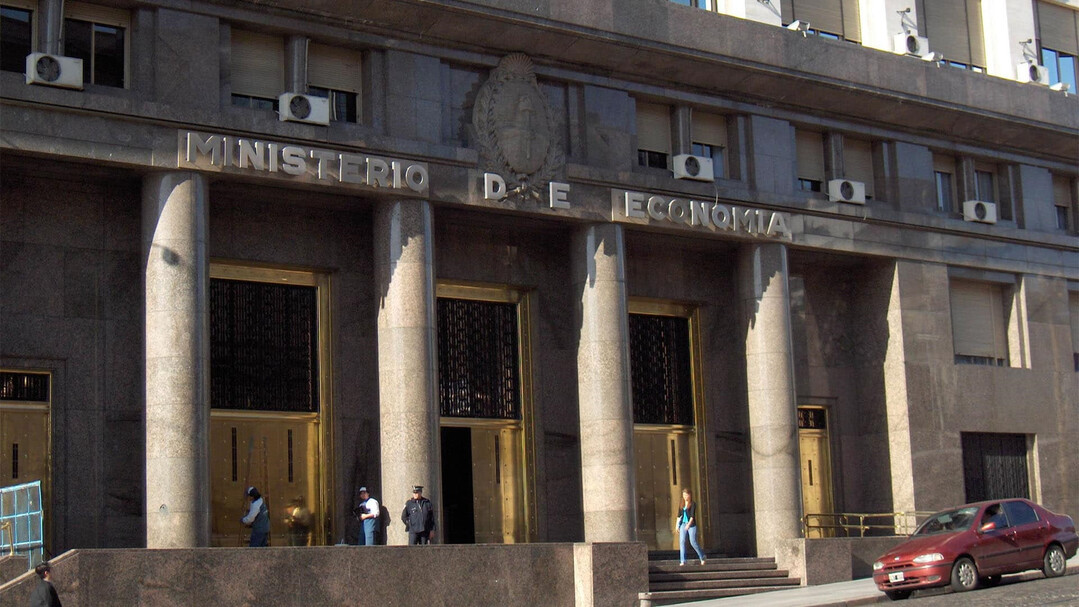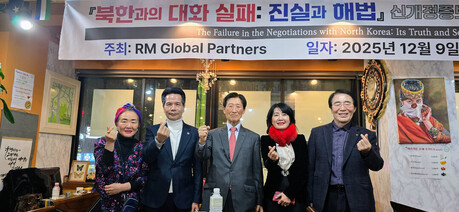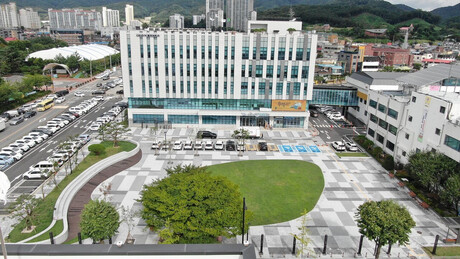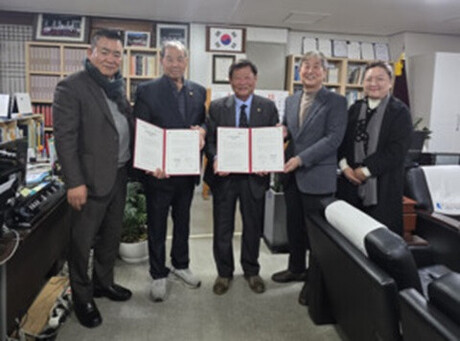
BUENOS AIRES – The Argentine government has entered the third phase of its economic stabilization plan by agreeing to a $20 billion Extended Fund Facility (EFF) with the International Monetary Fund (IMF). Led by Economy Minister Luis Caputo, the program is considered technically sound and is expected to accelerate the economic stabilization efforts that have already made significant progress in the first two phases. Driven by President Javier Milei's strong political support, the program's core elements include eliminating the fiscal deficit, improving the Central Bank of Argentina's (BCRA) balance sheet, encouraging capital inflows, and implementing broad deregulation and pro-market reforms.
This agreement with the IMF differs from past IMF programs in that its purpose is not crisis control but rather to consolidate an already ongoing comprehensive stabilization plan. Argentina has already balanced its public finances through a fiscal adjustment of 5% of GDP, restored the BCRA's function as a monetary policy tool by improving its balance sheet, attracted over $20 billion in private sector dollar deposits through policies encouraging capital repatriation, and is pursuing deregulation and pro-market, pro-investment structural reforms centered around a new Undersecretariat of Regulatory Reform and State Modernization. The Large-Scale Investment Incentive Regime (RIGI) is also part of these efforts.
The government's stabilization efforts are showing tangible results. The official exchange rate has stabilized, and the gap between the official and parallel (blue) dollar rates has significantly narrowed from 160% to 20%. Gross international reserves have increased (although net reserves remain negative), and the country risk has decreased by a third (although access to international financial markets remains difficult). Monthly inflation has slowed to below 3% (although there has been a tendency for stagnation and a rebound in March), and after initial significant sacrifices by the population, the economy is recovering rapidly, with private sector real wages also exceeding November 2023 levels and poverty rates decreasing compared to the second half of 2023 (although still high at 38%).
Nevertheless, the agreement with the IMF was unavoidable. To remove remaining barriers to investment inflows in strategic sectors such as mining, energy, and renewable energy, and to put Argentina on a path of stability and strong growth, it was essential to lift exchange controls (cepo) without disruption and to re-enter international financial markets. To achieve this, Argentina urgently needed external financial support to strengthen its foreign exchange reserves. Against this backdrop, the Argentine government negotiated with the IMF for several months, and the IMF Executive Board approved the program on April 11.

IMF Program Content, Objectives, and Expected Outcomes
The Extended Fund Facility (EFF) totals $20 billion over 48 months, of which $15 billion is expected to be disbursed this year, with the remaining amount to be disbursed in tranches over the next three years depending on the achievement of program targets. This strengthening of foreign exchange reserves, along with support from the World Bank (WB) and the Inter-American Development Bank (IDB), could be further complemented by a second repo agreement that Argentina is negotiating with an international banking consortium.
With this financial support, Argentina's foreign exchange reserves are expected to reach $48 billion by the end of this year. This is equivalent to 130% of the BCRA's peso liabilities (monetary base + LEFI), meaning the BCRA will have sufficient defense to lift exchange controls (cepo) without disruption and maintain exchange rate stability even in highly volatile situations.
2.1 Fiscal Targets: The core of the program is the zero fiscal deficit rule, followed by a zero monetary financing policy from the BCRA to fund the public sector. Under the zero fiscal deficit target, the program projects a primary fiscal surplus of 1.3% of GDP in 2025, increasing the surplus to 2.5% of GDP over the program period to account for increased debt interest payments. Achieving the fiscal targets will result in stabilizing nominal debt and reducing the debt-to-GDP ratio. This primary balance improvement is underpinned not only by maintaining strict public spending discipline but also by tax reforms, reforms to the federal government and provincial revenue-sharing system, and pension system reforms outlined in the program.
2.2 Monetary and Exchange Rate Regime: Given the high level of dollarization in the Argentine economy, the program aims for a gradual transition to a currency competition regime with a floating exchange rate against the dollar, similar to Peru and Uruguay.
Transitionally, an exchange rate band system has been introduced, setting a lower limit of 1,000 pesos per dollar (depreciating by 1% monthly) and an upper limit of 1,400 pesos per dollar (appreciating by 1% monthly), within which the peso will float freely. Along with the introduction of the new exchange rate regime, exchange controls (cepo) have been lifted, with some exceptions.
The new exchange rate regime operates as follows: when the exchange rate approaches the lower limit, the BCRA buys dollars and releases pesos. This intervention is not sterilized, resulting in an increase in peso liquidity in the market. This serves to meet the increasing demand for peso liquidity as the economy remonetizes with falling inflation (20% expected in 2025) and economic growth (5.5% expected in 2025). Conversely, when the exchange rate approaches the upper limit, the BCRA sells dollars and absorbs pesos. This is also not sterilized, resulting in a decrease in peso liquidity in a situation of decreasing peso liquidity demand.
Within the exchange rate band, the exchange rate will float freely according to market conditions. To manage monetary policy within the floating exchange rate band, the BCRA will closely monitor monetary aggregates, particularly transactional M2, which is closely related to the inflation rate. To maintain the target trajectory of transactional M2, the BCRA will use its own portfolio of government bonds to manage peso liquidity through open market operations at the monetary policy rate set by the BCRA.
This hybrid exchange rate regime acts as an anchor to stabilize expectations, given that the dollar price plays a crucial role as an indicator in Argentina's price formation. At the same time, the 40% fluctuation range between the lower and upper limits (increasing monthly) allows for flexible responses to unexpected external shocks, such as the mutual tariff imposition by the Trump administration (subsequently suspended for 90 days).
2.3 Foreign Exchange Reserves Target: This monetary-exchange rate structure must be consistent with the program's goal of accumulating $4 billion in net international reserves annually by the end of the program in March 2025. The cumulative increase in foreign exchange reserves during the program period is very similar to the amount of IMF support. In other words, the IMF's financial assistance acts as a bridge loan, immediately strengthening Argentina's foreign exchange reserves and buying time to accumulate sufficient reserves to ensure peso stability and smooth access to international financial markets.
How will Argentina accumulate these foreign exchange reserves? Basically, in two ways. The program assumes a balanced current account, so the accumulation of foreign exchange reserves will result from the remonetization of the economy and the expected re-entry into international financial markets in 2026.
2.4 Structural Reforms: The program is complemented by an ambitious deregulation and reform agenda. While the continued strengthening of macroeconomic fundamentals is a prerequisite for sustainable growth, the program also focuses on addressing structural issues. In particular, the newly created Undersecretariat of Regulatory Reform and State Modernization will continue the implementation of the law passed in the early days of the Milei administration (Ley Bases) and pursue additional reforms to deregulate and open the economy. The main areas of reform under this program include: (a) increasing the flexibility of goods and labor markets, removing trade and competitiveness barriers, (b) reducing the size of the state by streamlining functions and structures, and (c) improving governance by strengthening procurement processes.
Immediate Impact of the IMF Program Announcement
The impact of the IMF program agreement announcement was immediate. As announced by the economic team, the lifting of exchange controls (cepo) proceeded smoothly. The parallel dollar fell by 12%, narrowing the gap with the official dollar (which initially rose by 10%) as expected, because the lifting and/or easing of restrictions imposed by the cepo implies a de facto unification of the foreign exchange market. Indeed, the unified exchange rate moved around the middle of the band.
Another key variable, country risk, also moved in the expected direction. It fell from 900 bp to 720 bp, but this is still higher than the 400-500 bp level needed for Argentina to re-enter international financial markets.

Conflicting Risk Factors
From a technical standpoint, this program is perfectly designed. It has all the necessary elements for a successful program: sound fiscal foundations, pro-growth policies, and internal consistency in monetary and financial planning.
The most obvious risk is the potential for a significant deterioration of the global environment. Indeed, the program considers this a likely scenario. The program report notes that "risks to the outlook remain high, as a continued increase in global trade tensions could lead to a weakening of global demand, tighter global financial conditions, and lower commodity prices, which could negatively impact Argentina’s growth prospects and its ability to re-access international capital markets."
In this scenario, the program's assumptions, particularly achieving fiscal and international reserve accumulation targets, could become challenging. The program specifies as a contingency that "in the event that external or domestic risks materialize and generate exchange rate pressures, the authorities stand ready to tighten fiscal and monetary policy as needed."
The risk here is that instead of achieving the international reserve target through the remonetization of the economy and/or the re-access to international financial markets, the BCRA might be forced to raise the peso interest rate and offer high-yield peso-denominated government bonds to induce dollar sales. This strategy is unsustainable. If prolonged, increasing expensive short-term peso debt to accumulate international reserves exponentially increases domestic currency debt and undermines the credibility of the stabilization program. Following this path would be a mistake.
While failing to accumulate international reserves according to the target is problematic for the program, accumulating them at unsustainably high interest rates for a prolonged period is much worse. So, what is the solution? The most natural, though never simple, solution is to recalibrate the program's targets and timelines, considering that reality might be more complex than anticipated.
4.1 The 'Risk' of Success: Opposite Scenarios There is another type of 'risk' that can arise even if the program is more successful than expected. Even success brings complexities that must be managed skillfully and precisely.
If exchange rate stability consolidates and Argentina regains access to international financial markets, a strong inflow of capital could be triggered. In this scenario, strong appreciation pressures on both the nominal and real exchange rates would be expected, as typically occurs during periods of strong capital inflows. Exchange rate appreciation, in itself, poses a challenge for program management, as it affects the competitiveness of very important sectors of domestic production.
However, the biggest challenge for program management in this scenario is the dilemma of how to absorb capital inflows without generating inflationary pressures. Under current regulations, the nominal exchange rate can only fall to the lower band of the band, currently at 1,000 pesos per dollar. If this nominal appreciation is insufficient to rebalance the real exchange rate, the rest will occur through an increase in domestic prices. How? The BCRA would have to buy dollars to defend the lower band and issue pesos, and the resulting monetary expansion would accelerate inflation until the real exchange rate finds its equilibrium.
If this scenario materializes, the government will face two options: accept a temporary spike in inflation (which usually entails high political costs) or lower the lower band of the exchange rate (currently at 1,000 pesos per dollar) so that the nominal exchange rate can find its equilibrium without generating inflationary pressures.
Conclusion
Based on the zero fiscal deficit rule, a flexible exchange rate regime with moving bands (an initial lower band of 1,000 pesos and an upper band of 1,400 pesos, each depreciating and appreciating by 1% monthly), a technically perfect monetary-financial program, and an ambitious structural reform agenda, the third stage of the stabilization plan aims to consolidate the stability and economic recovery achieved in stages one and two.
The US$20 billion program with the IMF reaffirms all the efforts made so far and significantly strengthens the BCRA's international reserves. With the IMF's financial backing, the BCRA has sufficient firepower to maintain exchange rate stability. Exchange controls (the cepo) have been lifted without disruption, and if everything goes as planned, Argentina could eradicate its chronic inflation problem and enter a stage of sustained growth within two years. The program projects single-digit inflation convergence by 2027 and robust economic growth of 5% and 4.5% for the next two years.
The program faces two opposing risks. On the one hand, the possibility of a deterioration in the external environment, for which the program anticipates the authorities will respond by tightening fiscal and monetary policy. However, this carries the risk that the BCRA might resort to raising peso interest rates and getting caught in a peso-denominated debt dynamic to achieve its international reserve targets, undermining the credibility of the plan. On the other hand, if Argentina regains access to international financial markets, it could face a surge in capital inflows and the dilemma of how to absorb them without triggering inflationary pressures.
Whether in a successful scenario or in difficult times, the challenge for the successful completion of the program will be the activation of contingency mechanisms, the adjustment of targets, and, if necessary, the intelligent recalibration of timelines and objectives.
[Copyright (c) Global Economic Times. All Rights Reserved.]





























